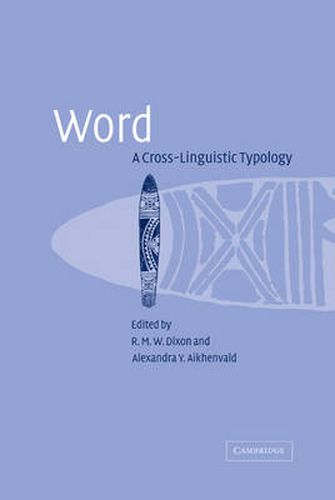Readings Newsletter
Become a Readings Member to make your shopping experience even easier.
Sign in or sign up for free!
You’re not far away from qualifying for FREE standard shipping within Australia
You’ve qualified for FREE standard shipping within Australia
The cart is loading…






In some languages words tend to be rather short but in others they may be dauntingly long. In this book, a distinguished international group of scholars discuss the concept ‘word’ and its applicability in a range of typologically diverse languages. An introductory chapter sets the parameters of variation for ‘word’. The nine chapters that follow then study the character of ‘word’ in individual languages, including Amazonian, Australian Aboriginal, Eskimo, Native North American, West African, Balkan and Caucasian languages, and Indo-Pakistani Sign Language. These languages exhibit a huge range of phonological and grammatical characteristics, the close study of which enables the contributors to refine our understanding of what can constitute a ‘word’. An epilogue explores the status and cross-linguistic properties of ‘word’. The book will be an invaluable resource for scholars of linguistic typology and of morphology and phonology.
$9.00 standard shipping within Australia
FREE standard shipping within Australia for orders over $100.00
Express & International shipping calculated at checkout
In some languages words tend to be rather short but in others they may be dauntingly long. In this book, a distinguished international group of scholars discuss the concept ‘word’ and its applicability in a range of typologically diverse languages. An introductory chapter sets the parameters of variation for ‘word’. The nine chapters that follow then study the character of ‘word’ in individual languages, including Amazonian, Australian Aboriginal, Eskimo, Native North American, West African, Balkan and Caucasian languages, and Indo-Pakistani Sign Language. These languages exhibit a huge range of phonological and grammatical characteristics, the close study of which enables the contributors to refine our understanding of what can constitute a ‘word’. An epilogue explores the status and cross-linguistic properties of ‘word’. The book will be an invaluable resource for scholars of linguistic typology and of morphology and phonology.